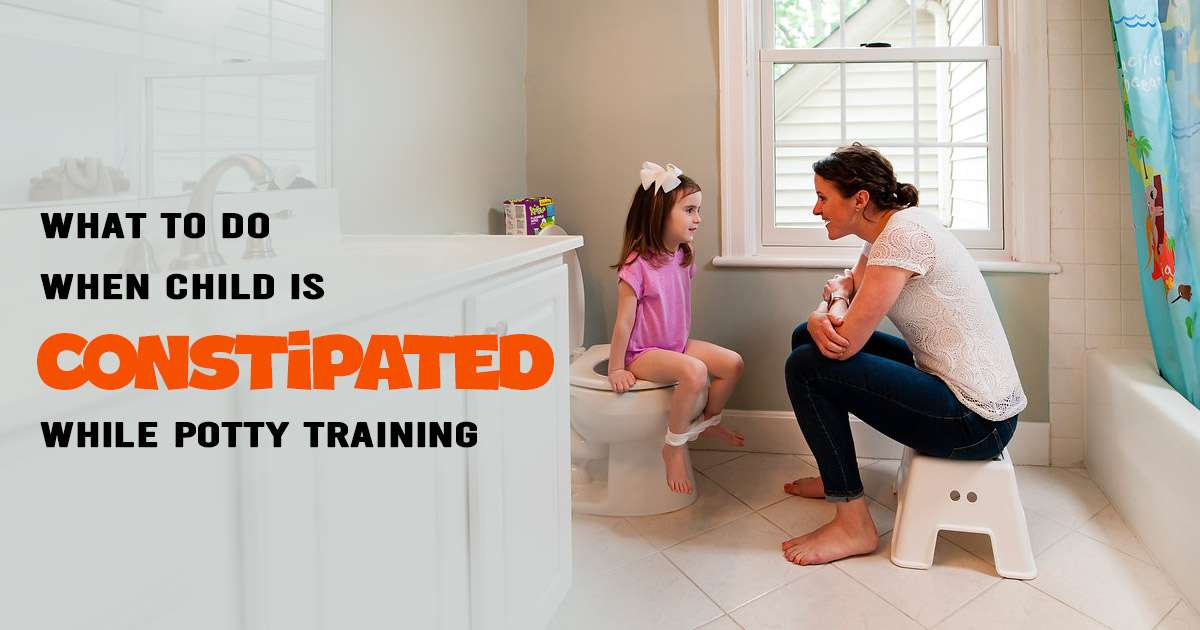How to manage constipation while potty training

Potty training often triggers constipation in children, stemming from anxiety about using the potty. Offering support, comfort, praise, and establishing a routine can alleviate this issue. When children feel pressured or stressed during potty training, they may resist using the potty, potentially resulting in the withholding of bowel movements and subsequent constipation. So let’s explore the connection between constipation and potty training, providing tips for successful potty training and addressing methods for managing constipation.
Can potty training cause constipation in toddlers?
Engaging in toilet training might bring about constipation, triggered by the weight of expectations from caregivers and the stress or anxiety associated with the process. This could prompt a child to retain stools, resulting in a buildup in the colon. The colon absorbs surplus water from the stool, heightening the difficulty of passing it.
With the ongoing accumulation of stool, the smooth muscles of the intestines undergo stretching and lose their efficiency, establishing a cycle that leads to constipation. Over the course of time, constipation could also induce a shift in sensation, rendering children oblivious to the urge for a bowel movement.
A child might resist bowel movements if feelings of fear or anxiety arise during potty use, if they anticipate discomfort or pain during a bowel movement, or if the potty training interferes with their playtime.
What should you do if your toddler is experiencing constipation during potty training?
In the event of constipation, parents and caregivers can address the issue directly, taking a pause from potty training until the constipation has been successfully resolved.
Here are some additional strategies that may contribute to a smoother potty training experience:
- Ensure proper support for the child’s feet.
- Familiarize the child with the potty by letting them sit on it with their clothes on initially.
- Establish a consistent routine for potty use at specific times each day, such as after meals and before bedtime.
- Watch for signs indicating when the child may need to use the potty.
- Create a relaxed environment during potty time, perhaps by reading to the child while they sit on the potty.
- Exercise patience, maintain a positive demeanor, and offer frequent praise throughout the potty training journey.
- Treat accidents as a normal part of the process and keep a change of clothes readily available.
It’s crucial to avoid rushing or exerting undue pressure during potty training, as this can induce anxiety or stress in the child, potentially leading to constipation.
What is toddler dyschezia?
Dyschezia presents itself as a challenge in initiating bowel movements and can often be mistaken for constipation.
In the case of children, dyschezia may manifest due to a lack of coordination in the abdominal and pelvic floor muscles. A child experiencing dyschezia might cry and exert effort during bowel movements.
These signs may strongly suggest dyschezia, especially if a child consistently passes soft stools on a daily basis.
On the contrary, constipation in children is characterized by:
- Less than two bowel movements in a week.
- Stools that are hard, lumpy, or dry make them difficult to pass.
- Unusual movements or positions adopted to avoid a bowel movement.
- Bloating or a swollen abdomen.
Distinguishing between dyschezia and constipation is essential for accurate identification and appropriate management of the underlying issue.
How to properly treat constipation in toddlers
Here are some unique and original tips for addressing constipation in children:
- Introduce a variety of high-fiber foods into their diet, including prunes, berries, apples, ripe bananas, vegetables, legumes, and whole grains.
- Consider temporarily pausing potty training until constipation resolves, allowing the child to focus on overcoming the issue without added pressure.
- Restrict the consumption of foods high in fat and sugar, as well as low-fiber and processed options like ice cream, pizza, cheese, and meat.
- Ensure the child maintains adequate fluid intake by offering water, clear soups, and fruit and vegetable juices without added sugars.
- Steer clear of soft drinks, as they may contain caffeine, which can contribute to dehydration and disrupt the digestive system.
- Encourage regular physical activity for the child, as daily exercise supports overall health and contributes to a healthy digestive system.
When should you start worrying and contacting a doctor?
Addressing constipation in children often involves adjusting potty training approaches or implementing home remedies. However, if these measures fail to alleviate the constipation or if it persists beyond a two-week period, it is advisable to seek guidance from a healthcare professional.
Immediate medical attention is crucial if a child exhibits any of the following symptoms, along with constipation:
- Presence of blood in stools.
- Bleeding from the rectum.
- Persistent abdominal pain.
- Noticeable bloating.
- Episodes of vomiting.
- Unexplained weight loss.
In such cases, consulting with a doctor promptly ensures a thorough assessment and appropriate intervention to address both the constipation and any underlying issues contributing to the symptoms.
Understanding Constipation While Potty Training
Experience a stress-free potty training journey with your toddler by incorporating supportive techniques and maintaining a positive environment. Remember, patience is key. If your child experiences constipation during this phase, consider pausing potty training temporarily and focusing on resolving the issue with high-fiber foods and ample fluids. Watch for signs of dyschezia, and differentiate it from constipation for effective management.
Utilize unique tips to promote a smooth potty training experience, ensuring your child’s well-being. However, if constipation persists or alarming symptoms arise, don’t hesitate to consult a healthcare professional for personalized guidance and timely intervention. Your child’s health and comfort are paramount, so take proactive steps for their well-being.

